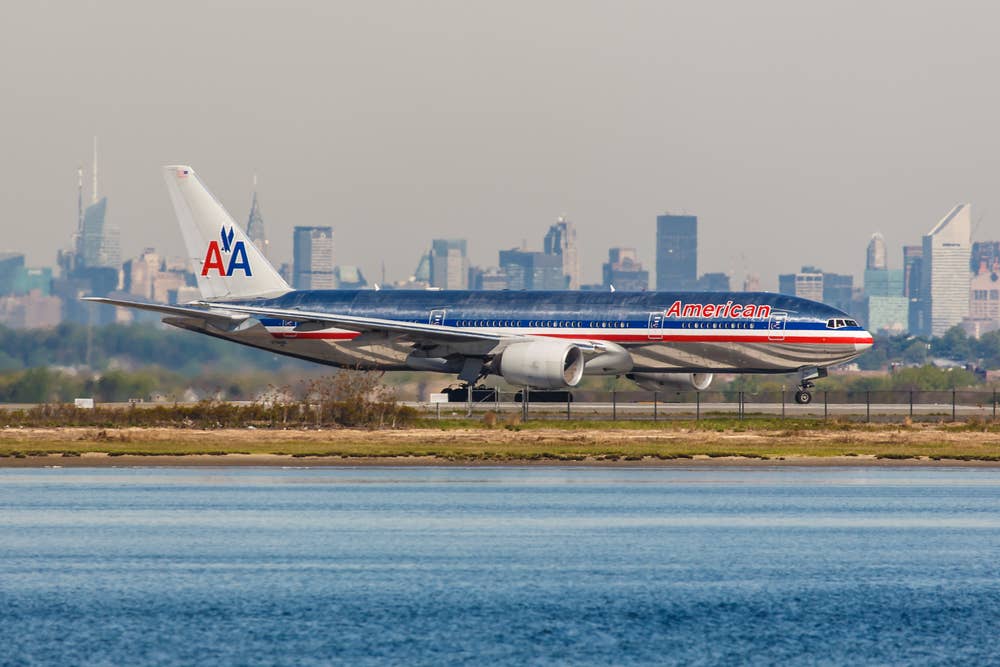That Close Call at JFK? It‘s Worse Than We Knew.
Why did an American Airlines 777 wander into the path of a plane taking off? We might know why, and it’s disturbing.

A photo of an American Airlines 777 on the ground at JFK International Airport in New York (Shutterstock)
The near-miss on the runway at John F. Kennedy International Airport in New York City last week got a lot of attention, and for good reason. The near-collision happened when an American Airlines 777 preparing to depart for London taxied onto an active runway as a Delta Airlines 737 bound for the Dominican Republic was already on its takeoff roll, reportedly already at better than 100 mph. The AAL flight had a combined 152 passengers and crew onboard; the Delta Flight had 151 in all. Luckily, a sharp controller saw the 777 taxi onto the runway and immediately cancelled the 737's takeoff clearance, which in layman's terms means, "Stop!" And the 737 pilot did indeed stop, reportedly about 1,000 feet short of the 777.
How did it happen? In part, it's surely the usual suspects---pilots losing track of where they were on the airport. It's something that shouldn't happen but does. For starters, the taxiway layout at JFK is weird, with taxiways Alpha and Bravo running a ring around the terminal and with at least one taxiway changing identifying letters mid-taxi. The 777 had been cleared to takeoff on runway 4L, but it apparently missed the right turn it should have taken to taxi to the runup area and instead continued straight ahead---missing the active runway it was crossing, the one with a Delta 737 taking off on it.
Again, disaster was averted, thank goodness, but it put a good scare into everybody. But how did it happen?
A few weeks ago, news came out that American Airlines management had instituted a new set of pilot procedures, and according to the pilots who fly for AAL, it's a complicated and untested set of procedures. Pilots individually and through their union, the Allied Pilots Association, voiced their concerns over the changes, which weren't rolled out with a thorough training schedule but via a bulletin. In a release issued a couple of weeks before the JFK close call, the union wrote, "The operational changes that management is attempting to implement without fulsome training alters how pilots communicate, coordinate, and execute flight safety duties at some of the most high-threat times of flight."
One of those critical times of flight is the taxi to the active runway, and reports are that the first officer was busy making an announcement, part of the new procedures that everyone was still learning, as the big airliner blew through the hold-short line without a clearance.
So, to recap, the near-collision between an American Airlines plane that taxied onto an active runway at JFK might have been caused by the pilots trying to comply with a hastily deployed set of cockpit procedures that the company was warned about implementing for just this reason.

Subscribe to Our Newsletter
Get the latest Plane & Pilot Magazine stories delivered directly to your inbox






